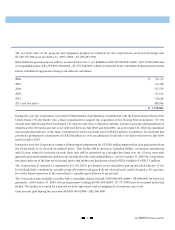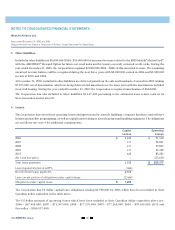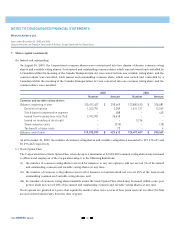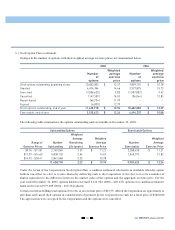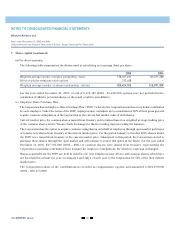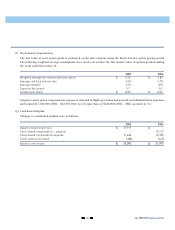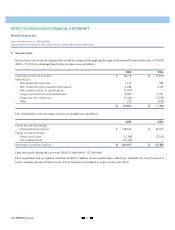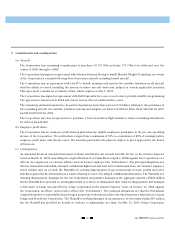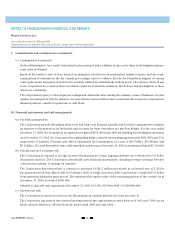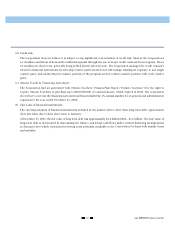Westjet 2005 Annual Report Download - page 61
Download and view the complete annual report
Please find page 61 of the 2005 Westjet annual report below. You can navigate through the pages in the report by either clicking on the pages listed below, or by using the keyword search tool below to find specific information within the annual report.
2005 WESTJET ANNUAL REPORT
59
(d) Credit risk:
The Corporation does not believe it is subject to any significant concentration of credit risk. Most of the Corporation’s
receivables result from tickets sold to individual guests through the use of major credit cards and travel agents. These
receivables are short-term, generally being settled shortly after the sale. The Corporation manages the credit exposure
related to financial instruments by selecting counter parties based on credit ratings, limiting its exposure to any single
counter party and monitoring the market position of the program and its relative market position with each counter
party.
(e) Ontario Teachers’ Financing Agreement:
The Corporation had an agreement with Ontario Teachers’ Pension Plan Board (“Ontario Teachers”) for the right to
require Ontario Teachers to purchase up to $100,000,000 of common shares, which
expired in 2004. The Corporation
elected not to exercise the financing agreement and has included the 1% annual standby fee in general and administration
expenses for the year ended December 31, 2004.
(f) Fair value of financial instruments:
The carrying amounts of financial instruments included in the balance sheet, other than long-term debt, approximate
their fair value due to their short term to maturity.
At December 31, 2005, the fair value of long-term debt was approximately $1.2 billion (2004 – $1.1 billion).
The fair value of
long-term debt is determined by discounting the future contractual cash flows under current financing arrangements
at discount rates which represent borrowing rates presently available to the Corporation for loans with similar terms
and maturity.


